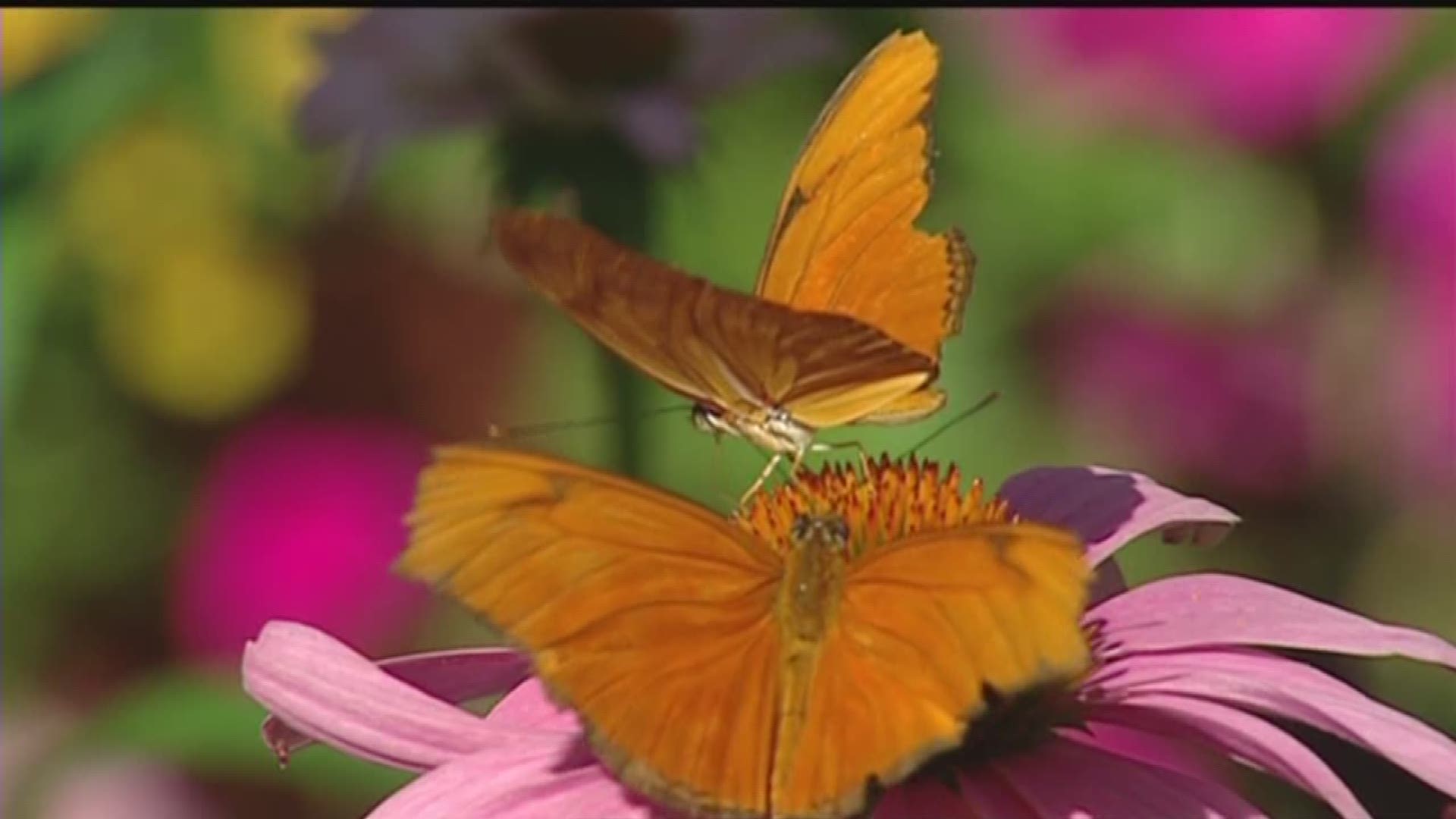BOISE — There are lots of reasons to plant a garden, whether it’s to grow your own food, or just for the joy of growing things, including beautiful flowers, trees and shrubs. You may even be trying to attract some wildlife to your garden, especially the birds and the bees and the butterflies.
Garden master Jim Duthie says that even the animals at Zoo Boise have their favorite plants, just like people do. And you can grow many of the same plants in your own yard at home.
Zoo Boise is a fun and interesting place to go anytime of the year, but while you’re checking out the animals in the zoo, take a look at some of the plants around the zoo as well.
There are some things growing here at Zoo Boise that the animals like to eat, like bamboo, which is a favorite of the red panda.
Wilson the red panda isn’t related to the cuddly black and white panda bears you’re probably thinking of. But they do share one thing in common. Their favorite food is bamboo.
“Panda does translate to bamboo eater, so they get first dibs on all of the bamboo here that we cut,” said Liz Littman, Zoo Boise assistant director.
You don’t see a lot of bamboo growing here in Idaho, but you can grow some varieties here in the Treasure Valley. In fact, they grow a lot of it here at Zoo Boise, just for Wilson to eat.
Last winter’s extreme cold and heavy snow took a toll on the bamboo thickets here at the zoo, but they’re coming back. And Wilson isn’t the only resident of Zoo Boise that likes it.
Many other animals, like the porcupines, like a different taste now and then, and bamboo is one of their treats.
The wallabies like it, too. They would also love to browse through your vegetable garden, snacking on your romaine lettuce and your carrots.
Those same veggies are also a special treat for giraffes.
“The giraffe, people who come here and feed them, give the giraffe a carrot, romaine…” said Littman. “Our capybaras… I like their diet…. they like kale, one of my favorites.”
And just like many Idaho gardeners, the zoo even grows blackberries for zoo residents with special diets.
“We have walking stick insects and they require blackberry leaves, so we grow those here,” said Littman.
“Mr. Mac, who’s our aldabra tortoise, he’s a favorite among everybody here at the zoo, and he gets a really big salad, so he eats really well. He loves red peppers."
One of the most popular features at the zoo during the summer is Butterflies in Bloom. You can walk into the butterfly enclosure and be surrounded by hundreds of colorful butterflies from Costa Rica. They love the bright colors and sweet scents of flowers and shrubs just like we do.
The owl butterfly, so named because of the big spots on its wings that looks like an owl’s eyes.
The striking blue morpho with it’s indigo wings.
And dozens of other types of butterflies, finding their favorite flowers and plants, like the aptly named butterfly bush, found in many Treasure Valley landscapes.
Showy cornflowers, also known as ecinacea, really draw in the butterflies, and are a popular addition to many flower gardens.
Delicate columbines, a favorite in any perennial garden.
Along with the soothing scent of lavender, that butterflies, and most people, really like.
And the colorful butterflies really stand out against the dark foliage of the elderberry bush, with its dainty pink blossoms.
Finally, let’s not forget honeysuckle, covered with a profusion of sweet-smelling flowers full of sweet-tasting nectar.
But one of the largest and most colorful butterflies is the monarch, which happens to be Idaho’s state insect. Each year these beauties migrate thousands of miles to winter in southern Mexico, and then return north to Idaho to reproduce. They’ll only lay their eggs on one certain plant – milkweed – which thrives in Idaho. Growing a few milkweed plants in your garden will guarantee that the monarchs will find their way to your backyard.
You might not see any wallabies or red pandas in your garden at home, even if you can grow some of their favorite snacks, but you can always attract butterflies and birds.
So you can see there are some things that you can grow in your own garden at home that even the animals at the zoo will like.
The Butterflies in Bloom exhibit at Zoo Boise will continue through Labor Day.
Monarch butterfly populations have been in decline in recent years, largely because milkweed, which they need to sustain their larvae, has also been in decline.
So if you’d like to learn more about growing milkweed to sustain the monarch butterfly population, you can get some good information at www.monarchwatch.org.

